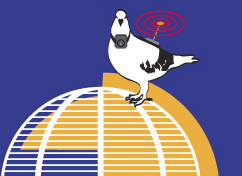public space, mobile, city, interactive, art of memory, interface, city, critical practice, tactics, participatory, engaging Location based media and in particular the so called locative arts discourse make claims for reconfiguring public spaces through participatory uses of mobile and wireless technologies in urban settings. In this paper I am questioning the degree to which location based media can challenge existing configurations of public space. Instead I suggest to "read" these acts, on the one hand as metaphoric or conceptual acts which address the discourse of public space, and on the other hand as private yet shared practices within public spaces, new forms of ars memorativa. In the paper I also consider the role of new technologies as a sublime.
Abstract Contemporary creative location based media projects like Urban Tapestries by Proboscis discuss spatial annotation as public authoring. The act of making a record is indeed in public, yet the inscribed notes, sounds, images shared through networked maps are hidden from most of the public. Thus location based, or locative media, tend to be privately authored media layers indexically relative to a public space, and usually exclusively shared by a set of participants. This paradox raises questions about how wireless media projects can act as platforms or sites for reconfiguring the public space. The desktop metaphor on a PC was inspired (at least the MIT development branch of it) by Ars Memorativa of Ancient Greece and the Middle Ages. Theatres of memory, different pictorial planes in two dimensions were used as private visual extensions of memorizing and organizing information - and narratives to be performed live. Interestingly location based media as public authoring resembles this setup where a particular grid, a visual representation is both marked and written into. The key difference between the two modes is that instead of communicating with a system only, individuals can now create shared ars memorativa environments. Artistic uses of wireless media in public spaces require visible or audible tactics of engagement in order to make a claim that they participate in reconfiguring public spaces. Far too often creative wireless projects are eclectic experiments only accessible for a particular festival audience for a limited period of time. |
